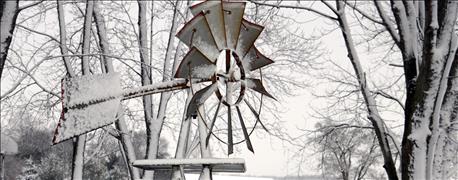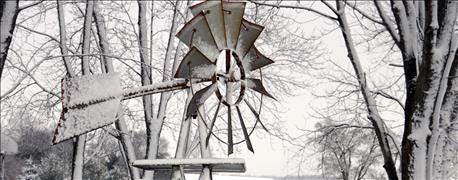
Two things corn growers will likely remember from 2016 are one, yields were good, but not as good as expected, and two corn diseases came in late and caused more problems than expected. The panel of Indiana Certified Crop Advisers turns their attention to whether or not winter can help alleviate disease concerns heading into 2017.
Panel members include Betsy Bower, agronomist Ceres Solutions, Terre Haute; Jeff Nagel, agronomist, Ceres Solutions, Lafayette; and Darrell Shemwell, manager, Posey County Co-op, Poseyville.

PREVENT A REPEAT: If you had disease issues this year, you don’t want them to come back next year. However, wishing for help from winter weather may be no more effective than wishing on a star!
Question: Lots of corn diseases came in late this year. Should I hope for a cold winter to knock out disease organisms? Should I hope for snow, too? Our main diseases were gray leaf spot, northern corn leaf blight, southern rust and diplodia. Could you address each one?
“Winter weather won’t have much impact on these diseases,” Nagel says. “The environmental conditions during the growing season [in 2017] will have a much bigger effect on disease potential. Managing these diseases is best achieved by hybrid selection, crop rotation, residue management and fungicide.”
Here is the disease-by-disease rundown:
Gray leaf spot
Nagel: The gray leaf spot fungus overwinters on corn residue. Warm temperatures and wet, humid conditions during the summer favor disease development. Corn-on-corn and conservation-tillage fields are more at risk due to more corn residue.
Bower: You could potentially reduce the risk of this and northern corn leaf blight by destroying leaf residue. However, your neighbors won’t. The potential for gray leaf spot will continue in Indiana.
Shemwell: A cold winter and snow won’t have much effect. The conditions we really need to look at are not winter’s, but conditions next summer.

RIGHT CONDITIONS: When conditions are right, even a leaf with small gray leaf spot lesions can become highly infected within a few days.
Northern corn leaf blight
Shemwell: Conditions that favor northern corn leaf blight during the summer are moderate temperatures, and wet and humid conditions such as heavy dews and overcast days. If we have hot, dry conditions, we are at less risk for both gray leaf spot and NCLB.
Nagel: NCLB has different races of the fungus. Pay close attention to the level and type of resistance when choosing hybrids. Avoid corn on corn in fields that had significant NCLB the previous year. Use fungicides at tasseling if conditions are favorable for disease development.

DISEASE ON A ROLL: Northern corn leaf blight lesions grow large quickly. Soon, they can take over the leaf. (Photo courtesy of Kiersten Wise, Purdue University plant pathologist)
Southern rust
Shemwell: Southern rust does not overwinter in Indiana, so a cold winter or lots of snow will not affect it. It’s on everyone’s mind in southern Indiana, as it hit hard and caught us somewhat off guard. I’ve been in this business since 1979 and haven’t seen a disease this devastating to a corn crop, especially later-planted corn.
Nagel: Spores arrive here on tropical wind currents, usually later in the summer. Select hybrids with disease resistance, but be prepared to scout fields and apply foliar fungicides if infections start earlier.

LATE-SEASON SPOILER: Southern rust came in hard and fast later in the season in the southern half of Indiana, cutting yields in many fields.
Diplodia ear rot
Nagel: Diplodia ear rot can occur as a stalk rot or ear rot. The fungus overwinters on corn debris, so conservation-tillage fields are more at risk. The fungus that causes ear rot is favored by dry conditions prior to silking, followed by wet conditions at or within three weeks of silking. Fungicides do not provide protection against diplodia ear rot, but do keep the plant healthier and reduce the potential for stalk rot.
Shemwell: Cold conditions do not much affect it. Diplodia will be worse in fields of corn following corn.

UGLY SIDE OF CORN: There is nothing pretty about ear rots. Diplodia produces a white mold that can overtake an entire ear.
About the Author(s)
You May Also Like




